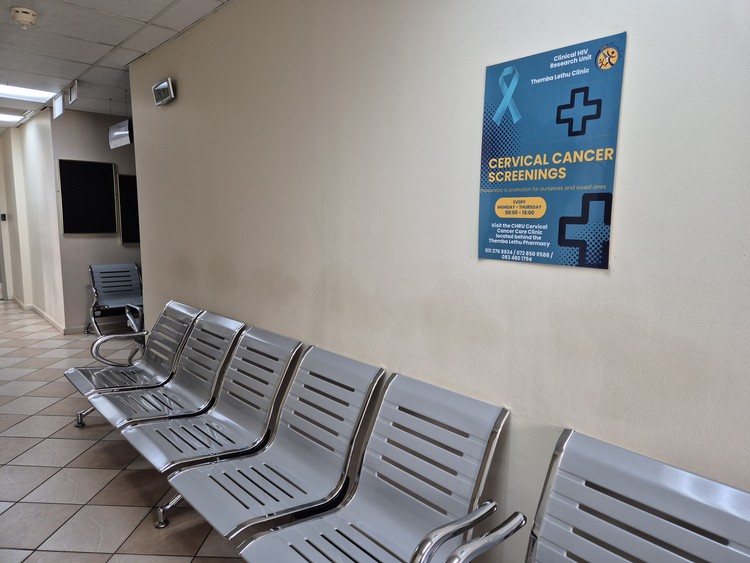Withdrawal of US Aid Has Hurt South Africa’s HIV Programme

By Marcus Low and Nathan Geffen
The number of HIV viral load tests is significantly lower than expected, according to an analysis of data from the National Health Laboratory Service which Spotlight and GroundUp obtained through the Promotion of Access to Information Act.
The number of HIV viral load tests recorded by the National Health Laboratory Service (NHLS) is significantly less than expected since February 2025. We are aware of no compelling reason to explain this except the withdrawal of US aid.
All patients in the public health system with HIV are supposed to get viral load tests regularly, usually once a year. These tests are used to determine if HIV is being suppressed successfully in their blood using ARV medicines. If the number of viral load tests declines, it likely indicates either that patients are being lost to the public health system, they are being monitored less diligently, or the system for recording viral load tests has become less accurate. Any one of these would imply a serious hit to South Africa’s public sector HIV programme.
GroundUp and Spotlight used the Promotion of Access to Information Act to request, among other things, viral load test numbers from the NHLS. We were provided a spreadsheet with the number of tests per month for each province from January 2015 to September 2025.
The current US Administration began taking steps to reduce US aid across the world after Donald Trump was inaugurated as president on 20 January 2025. Billions of rands have been withdrawn from South Africa. This caused some services, especially for vulnerable people — including gay men, sex workers and trans people— to close almost immediately, such as the Ivan Toms Centre in Cape Town and Wits University facilities in Johannesburg. US aid also funded support systems, such as data collection.
Public health experts have accused the government of being in denial about the consequences of the withdrawal of US aid. Health Minister Dr Aaron Motsoaledi has responded defiantly. In May, he stated that a record number of people had been initiated on ARVs over the previous months, a claim disputed by epidemiologists.
https://embed.bsky.app/embed/did:plc:jonfyv7sw4yyacspczyvtbrf/app.bsky.feed.post/3lpo5lttuks2f?id=7589772774055212&ref_url=https%253A%252F%252Fwww.spotlightnsp.co.za%252F2025%252F11%252F04%252Fwithdrawal-of-us-aid-has-hurt-south-africas-hiv-programme%252F&colorMode=dark
We asked a biostatistician to examine the NHLS data we received. She analysed the change in viral load tests by month and province over time. She found that the number of viral load tests for the period February to September this year is statistically significantly lower than what one would expect based on previous years. This confirms the view of public health experts: the withdrawal of US aid from South Africa has hit the HIV programme badly.
The decline in viral load numbers was previously reported by the Daily Maverick and Reuters for March and April. This was inevitable given the sudden withdrawal of US aid. But the new data shows that the decline has been sustained until September. The decline has occurred in every province except Limpopo.
How Viral Load Testing Performed Against Expectations, Feb–Sept 2025
| Province | Predicted | Actual | Difference | % Difference | p_value |
|---|---|---|---|---|---|
| Eastern Cape | 545,061 | 463,510 | -81,551 | -15 | 0.0007 |
| Free State | 285,423 | 234,671 | -50,752 | -18 | 0.0002 |
| Gauteng | 1,210,891 | 1,006,833 | -204,058 | -17 | 0.0002 |
| KwaZulu-Natal | 1,475,360 | 1,284,008 | -191,352 | -13 | 0.0001 |
| Limpopo | 419,357 | 441,314 | 21,957 | 5 | 0.1550 |
| Mpumalanga | 532,713 | 450,495 | -82,218 | -15 | 0.0007 |
| North West | 326,907 | 292,150 | -34,757 | -11 | 0.0002 |
| Northern Cape | 64,855 | 58,746 | -6,109 | -9 | 0.0017 |
| Western Cape | 324,074 | 290,011 | -34,063 | -11 | 0.0205 |
| National | 5,184,640 | 4,521,738 | -662,902 | -13 | 0.0003 |
| *This table presents the expected and actual numbers of viral load tests conducted by the National Health Laboratory Service in South Africa from February to September 2025. | |||||
By looking at the change in viral load tests since 2015, a biostatistician estimated the number of viral load tests that there should have been for the period February to September 2025 using a standard linear regression model. She found that the actual number of tests declined significantly. A p-value less than 0.05 is considered statistically significant. Except for Limpopo, the p-values are substantially less than 0.05 for every province. The analysis takes into account that the NHLS suffered a data hack in 2024, and consequently, there is missing data for a few months.
An even simpler analysis also raises red flags. The absolute number of viral load tests conducted from February to September 2025 (4,521,738) is slightly lower than it was over the same period in 2023 (4,554,463) (due to a cyber attack, the NHLS’s 2024 figures are not a reliable comparison). Given that the number of people on HIV treatment is expected to increase over time and that everyone should be getting at least one viral load test per year, one would expect the number of viral load tests to have increased by a few hundred thousand since 2023.
These results show that the HIV programme has been set back. It is possible that tens of thousands of people have been lost to care. Also possible is that they are disproportionately the most vulnerable patients treated at specialist US funded facilities that closed as a consequence of the funding cuts.
Nevertheless the HIV programme is still successfully treating millions of people and South Africa is far better off than other African countries, such as Mozambique, whose response to HIV is almost entirely paid for with foreign aid.
Fewer patients have viral rebound. But is it a silver lining?
People with HIV who are on ARVs should have, after a few weeks, an undetectable amount of virus in their blood. This is what the viral load test measures. But if the ARVs stop working or a person stops taking their ARVs regularly, the virus will rebound in their blood.
The NHLS counts the number of viral load tests for which patients have more than a thousand copies of HIV per drop of blood. For these patients, the virus has rebounded in their blood.
The percentage of viral rebound cases has come down in 2025.
This might be because the standard ARV regimen has improved. A drug called dolutegravir is now part of the regimen, and it is known to do a better job of suppressing HIV than the drug it replaced a few years ago. This would be the good-news explanation, a silver lining in the data.
But it’s also possible that it’s because vulnerable patients treated in specialist clinics funded by US aid are more likely to have viral rebound and they are the ones who have been lost to the HIV programme. This would be the bad-news explanation.
At this point, we don’t have data to know which explanation of the viral rebound improvement is correct. The situation also varies substantially by province. The real picture might be a complex interaction of multiple factors.
This article was jointly produced by Spotlight and GroundUp.
Republished from Spotlight under a Creative Commons licence.
Read the original article.











